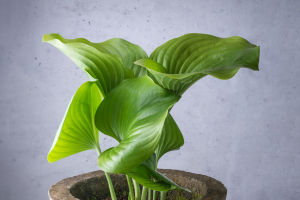Calla lilies (Zantedeschia spp.) are known for their elegant, trumpet-shaped flowers and striking green foliage, making them a popular choice for gardens and indoor plants.
However, despite their beauty, calla lilies are notoriously difficult to keep, especially when it comes to managing temperature fluctuations.
Whether you're a seasoned gardener or a novice plant lover, understanding the unique needs of calla lilies can be the difference between a thriving plant and one that struggles to survive.
Why Calla Lilies Are Hard to Keep
Calla lilies are native to southern Africa, where they grow in mild, temperate climates with moderate rainfall. This origin plays a significant role in why they can be difficult to keep in different environments. These plants have specific requirements for temperature, moisture, and light that can be challenging to meet, especially in regions with extreme weather conditions.
One of the main challenges in keeping calla lilies is their sensitivity to temperature. They are not frost-tolerant, which means that exposure to cold temperatures can damage or even kill the plant. On the other hand, they also don't fare well in extremely hot conditions. Striking the right balance between these two extremes is key to successfully growing calla lilies.
Calla Lilies and Cold Sensitivity
Calla lilies are indeed afraid of the cold. These plants thrive in temperatures ranging from 60°F to 75°F (15°C to 24°C) during the day and prefer slightly cooler temperatures at night. When temperatures drop below 50°F (10°C), calla lilies begin to show signs of stress. Frost can be particularly damaging, causing the leaves and flowers to wilt, turn brown, and eventually die.
If you live in an area with cold winters, it's crucial to take steps to protect your calla lilies from frost. For outdoor plants, consider bringing them indoors before the first frost of the season. If bringing them inside is not an option, you can cover them with a frost cloth or mulch to provide some insulation. However, even with these precautions, keeping calla lilies outdoors in a cold climate can be risky.
For indoor calla lilies, make sure they are placed in a location where they won't be exposed to cold drafts. A windowsill might seem like a good spot, but if the window is poorly insulated, the cold air can harm the plant. Instead, place your calla lily in a bright, warm room where the temperature remains consistent.
Calla Lilies and Heat Sensitivity
While calla lilies are sensitive to cold, they are also not particularly tolerant of extreme heat. In temperatures above 85°F (29°C), calla lilies can become stressed, leading to wilting and sunburn on the leaves. High temperatures can also cause the soil to dry out more quickly, which can be detrimental to calla lilies, as they prefer consistently moist but not waterlogged soil.
To protect calla lilies from heat stress, it's important to provide them with some shade during the hottest part of the day, especially if they are planted outdoors. A location with dappled sunlight or partial shade is ideal. If you are growing calla lilies in pots, you can move them to a cooler spot when temperatures soar.
For indoor plants, make sure they are not placed too close to a heat source like a radiator or heating vent. While calla lilies need bright light to thrive, direct sunlight through a window can cause the leaves to scorch. A spot with indirect light is often the best choice.
Watering: Striking the Right Balance
In addition to temperature sensitivity, calla lilies require careful watering to thrive. These plants like to be kept consistently moist, but overwatering can lead to root rot, a common problem that can quickly kill the plant. Finding the right balance can be tricky, especially in environments where temperature and humidity fluctuate.
During the growing season, water your calla lily regularly, ensuring that the soil remains moist but not soggy. In the winter, when the plant enters dormancy, reduce watering significantly, allowing the soil to dry out between waterings. This period of dormancy is essential for the plant's health and helps ensure that it will bloom again the following season.
Keeping calla lilies healthy and thriving can be a challenge, especially if you live in an area with extreme temperatures. These plants require careful attention to their environment, particularly when it comes to temperature and watering. However, for those who are willing to put in the effort, the reward is a stunning display of flowers that can brighten any space.
If you love the look of calla lilies but are concerned about their care, consider starting with a potted plant that you can easily move indoors or outdoors as needed. With a little extra attention and care, you can enjoy the beauty of calla lilies, even if they are a bit finicky about their surroundings.


